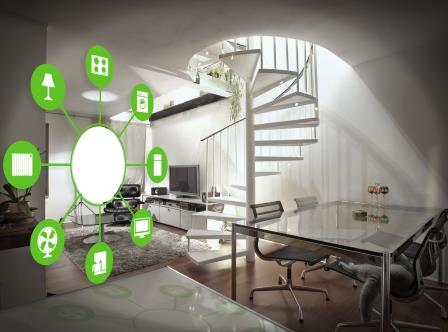By Natalie Hildt Treat | Wed, March 16, 16
Home Energy Management Systems (HEMS) include any hardware and/or software system that can monitor and provide feedback about a home’s energy usage, and/or enable advanced control of energy-using systems and devices in the home. Often marketed through comfort and security lenses, HEMS ultimately have the opportunity to help provide deeper energy savings and harness the energy components of today to have the smart home of tomorrow.
As policymakers and efficiency program administrators consider entering this world, they should bear in mind that HEMS are a long-term play. Whether it’s through a smart thermostat or a behavioral demand response program — or even an energy efficient appliance that happens to be “connected” — consumers have started to enter the smart home space, but there’s still a long way to go before that market is transformed. A smart LED bulb, while providing virtually no energy savings over traditional LEDs, is one of the lowest cost, highest “wow factor” products that might be worth investment to help customers warm up to the larger idea of a smart home. Program administrators and policymakers have a major role to play to help the uptake of this technology, and the benefits are easy to find.
 HEMS have the ability to work in nearly every type of dwelling, in every region in the country, to address nearly every household system, and can manage energy loads as well as peak demand, renewable generation, and energy storage. HEMS could help program administrators to advance cost-effectiveness calculations, more accurate and timely EM&V, and lead to new approaches in residential program delivery. For homeowners, HEMS could be the key to transitioning the analog homes of the present to the responsive, comfortable, and zero energy homes of the future.
HEMS have the ability to work in nearly every type of dwelling, in every region in the country, to address nearly every household system, and can manage energy loads as well as peak demand, renewable generation, and energy storage. HEMS could help program administrators to advance cost-effectiveness calculations, more accurate and timely EM&V, and lead to new approaches in residential program delivery. For homeowners, HEMS could be the key to transitioning the analog homes of the present to the responsive, comfortable, and zero energy homes of the future.
As the HEMS world evolves, policymakers and program administrators will face challenges and questions such as:
- Should there be standard protocols to ensure interoperability and prevent rapid obsolescence?
- What are the best ways to engage market actors, while maintaining customer choice, security and privacy?
- Who should own or get access to energy usage data?
- If HEMS can do so much, does it still make sense – from a cost perspective – for utilities that have not already invested in smart meters on a broad scale to do so? Or are there enough other compelling reasons — outage repair, ensuring interoperability, data collection, demand response — where advanced meters might still be a preferable technological solution?
In addition to publishing Opportunities for HEMS in Advancing Residential Energy Efficiency Programs in 2015, NEEP has also been convening a regular working group with industry and efficiency stakeholders to align efforts and advance the technology since 2014. NEEP will continue to facilitate dialog and work to understand and share best practices to help ensure that HEMS advance smartly — keeping energy efficiency and other demand-side resources in mind — so that wise energy use and all its benefits are baked in to new policies, programs and technologies. Please see the 2016 Regional Roundup for the full story.
